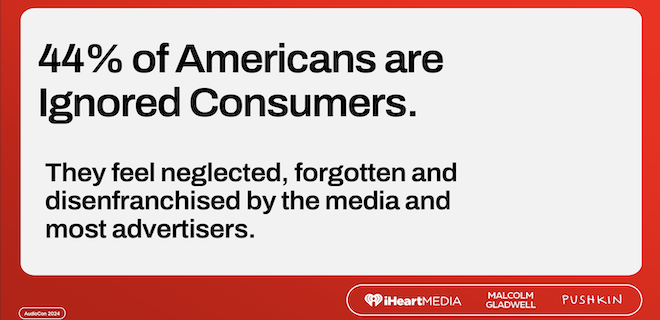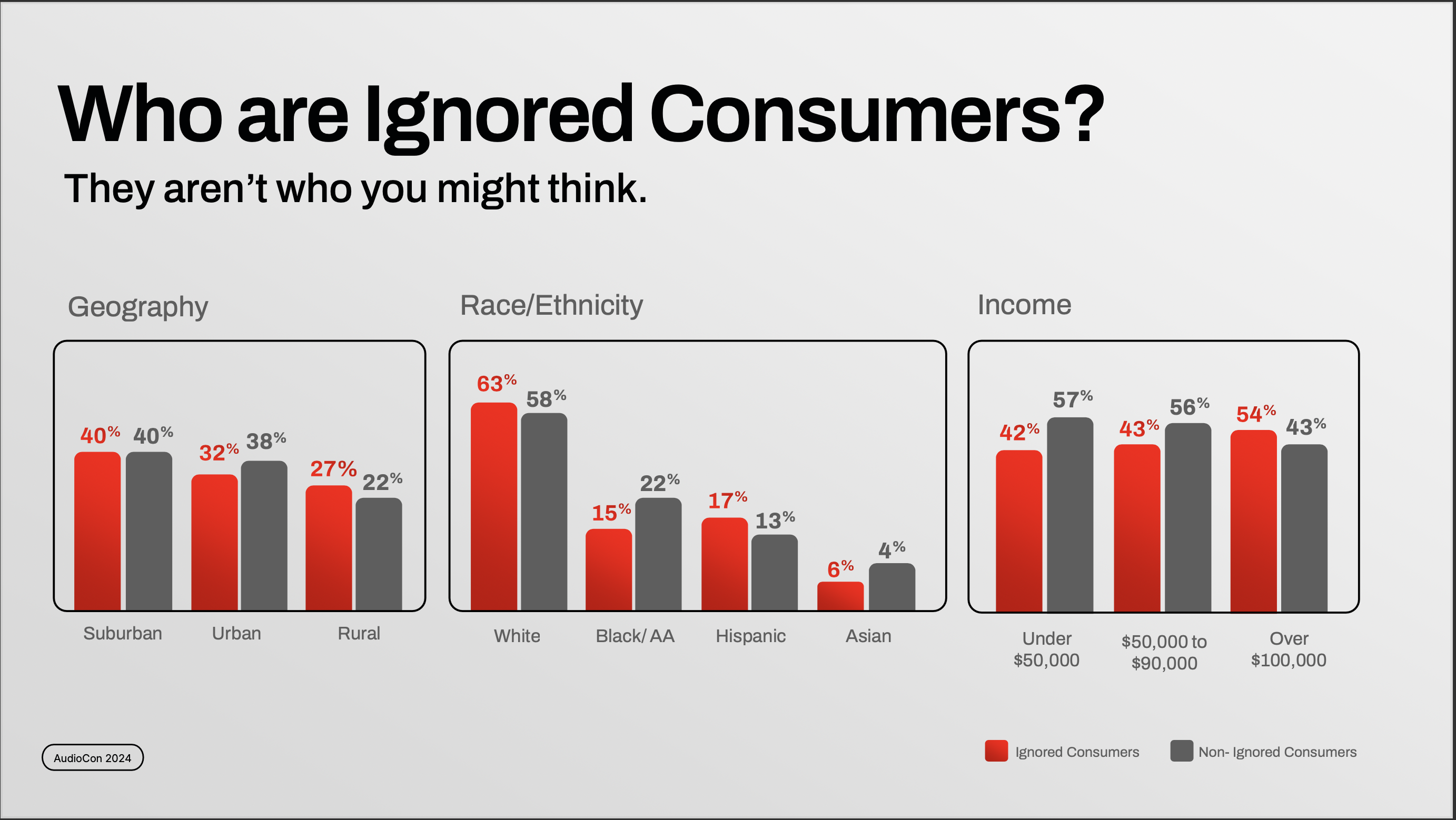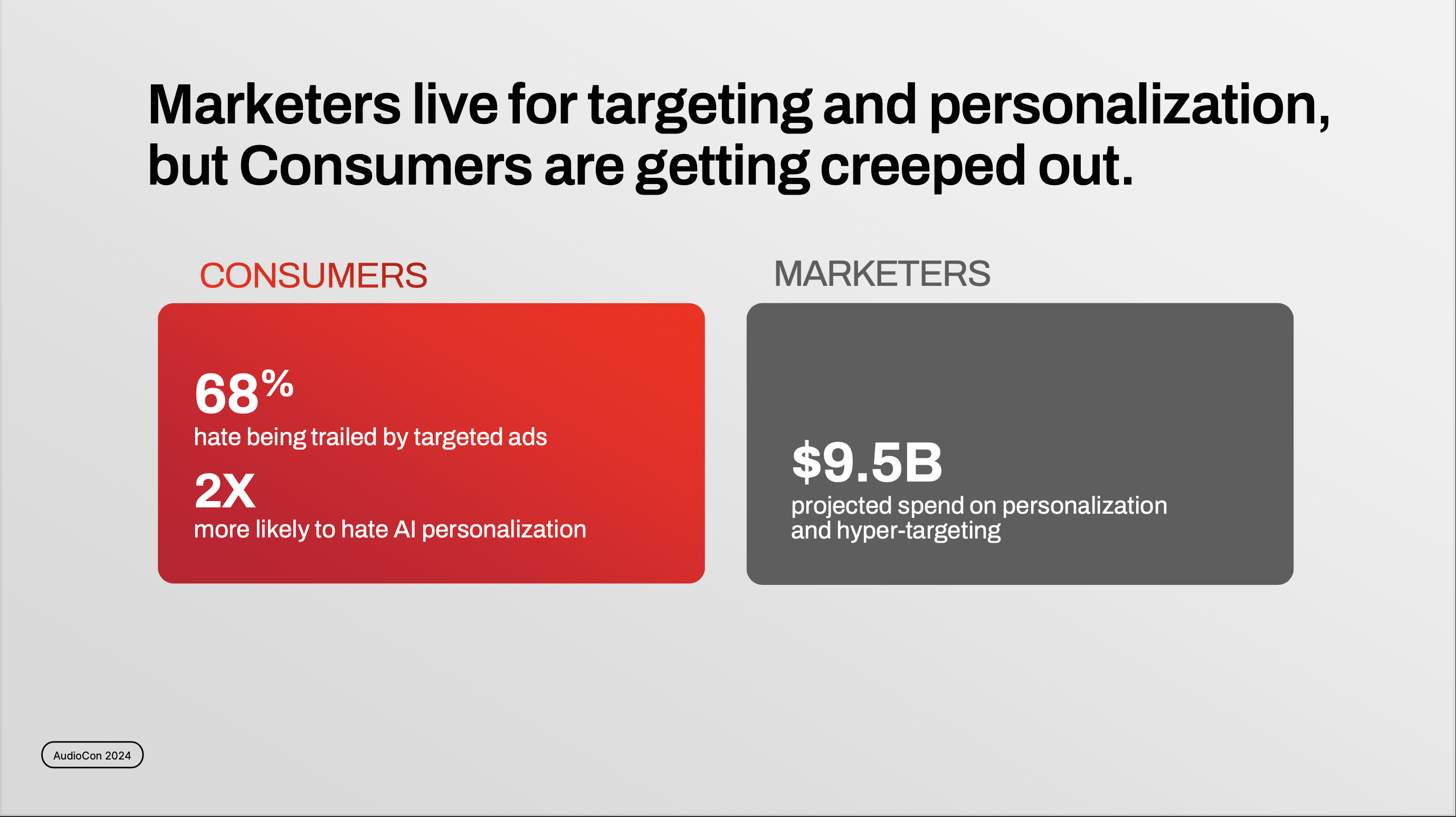
A growing divide between marketers and consumers highlights the importance of aligning advertising strategies with real-world values and preferences to avoid alienating audiences.
Is there a bigger disconnect between marketers and consumers than we initially thought?
A recent iHeartMedia study exposes a growing divide between how marketers perceive their audience and how consumers actually experience media and advertising.
The research reveals a striking statistic: nearly half of Americans — 44% — feel ignored by advertisers, indicating a significant disconnect that could have real consequences for brands. In fact, 72% of consumers say they are unwilling to buy from companies they feel are overlooking them, and 75% express a willingness to pay more for brands that align with their values. These insights challenge brands to reassess their strategies and find more meaningful ways to connect with their audience.
This disconnect, alongside a clear cultural divide in values — from religion and law enforcement to perceptions of luxury — highlights the urgent need for brands to bridge the gap between their strategies and consumers’ real-world preferences and behaviors.
“We marketers have more data at our fingertips than ever before, yet almost half of American consumers are feeling ignored,” said Gayle Troberman, CMO, iHeartMedia. “As marketers, we have to be careful not to let our personal perception guide our marketing decisions. This study lays out where our perception matches the marketplace and where there are major differences.”
Who Feels Ignored Across Geography, Race, and Income?
While the bigger picture here is important – that stats say nearly half of consumers feel ignored – it’s also important to look at the minute details. Based on IHeartMedia’s study of consumers’ geography, race/ethnicity, and income, there are some startling stats.
Geography:
- In suburban homes, about 40% of consumers fit in the ignored and non-ignored categories.
- About 32% felt ignored in urban homes, and 38% fit in the non-ignored category. While more fit in the non-ignored category marketeers will still want to hit the other 32%.
- In rural areas, 27% fit in the ignored category and 22% fit in the ignored.
Race/Ethnicity:
The race and ethnicity category is a bit more complex. While the stats show that 63% of white consumers fit in the ignored category, about 58% of white consumers fit in the non-ignored category. This is a stark difference in Black (22%), Hispanic (13%), and Asian (4%) consumers who fit in the non-ignored category.
While it is no secret that multicultural audiences are often ignored and underrepresented in marketing strategies, it should still be an eye-opening statistic when the numbers are laid out plainly. These audiences hold massive amounts of influence, spending power, and essential data that marketers are ignoring.
AdMonsters just covered this in our Spanish-language streaming article: experts expect Spanish speakers in the U.S. to grow to over 75 million by 2030 and projected Hispanic buying power in the U.S. to reach $1.9 trillion by the end of 2023. But this is true for all diverse audiences.
Income:
When it comes to the ignored and non-ignored categories, most participants from a salary under $50,000 to a salary over $100,000 fit in the 40 – 50 % range.
Personalization: The Creep Around the Corner
Marketers love personalization. It helps them connect more closely with consumers and ensures that the ads that consumers engage with result in a final purchase.
Research company Advertising Perceptions recently conducted a study showing that 82% of advertisers attributed 2023 revenue growth to customized ads. They further argued that, without personalized ads, one in five businesses would face closure or layoffs, and nearly half would need to raise prices.
It’s no surprise that advertisers bank on personal ads for their business. However, many consumers feel personalized targeting is creepy, and I know marketers do not want audiences to equate them with creepiness. Ad tech is still fighting against this narrative.
According to IHeartMedia’s study, 68% of consumers hated personalized advertising and are two times more likely to hate AI personalization. I know this puts a screw in most advertisers’ practices, but it is also important to listen to the consumer.
Even further, the study reveals that this level of ad targeting may not be working as intended. Seven out of ten consumers claim digital ads are irrelevant despite targeting. Will this change the $9.5 billion that IHeartMedia projects marketers to spend on personalization and hyper-targeting in 2024?
Consumer Values vs. Marketing Trends: Why the Disconnect Matters
There’s a significant gap between how consumers and marketers approach advertising, purchasing decisions, and values. A striking 44% of Americans feel ignored by both media and advertisers. Both groups must understand that most consumers prefer to support brands that align with their values.
Unlike marketers who can swiftly make higher-value purchases, consumers take a more deliberate path to purchasing, often consulting family and saving up for weeks before making decisions on $100 purchases.
The divide continues with contrasting preferences. While consumers enjoy activities like buying lottery tickets, marketers find them cringeworthy, and while marketers are enthusiastic about health trends, consumers remain skeptical. Furthermore, religion, law, and order are twice as important to consumers as to marketers.
All these stats highlight that advertisers must meet consumers where they are. This could be the difference between further alienating your audience and bringing them into the fold.

